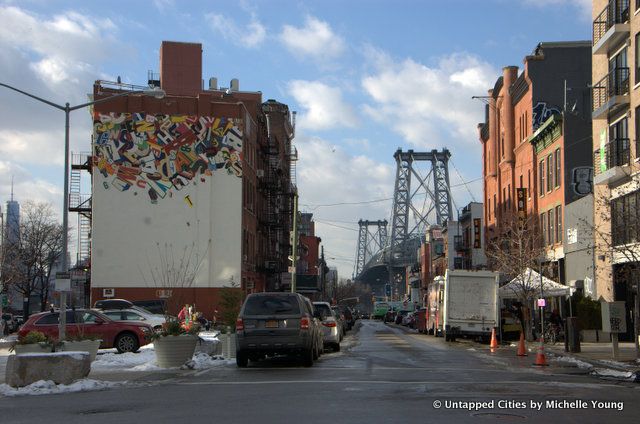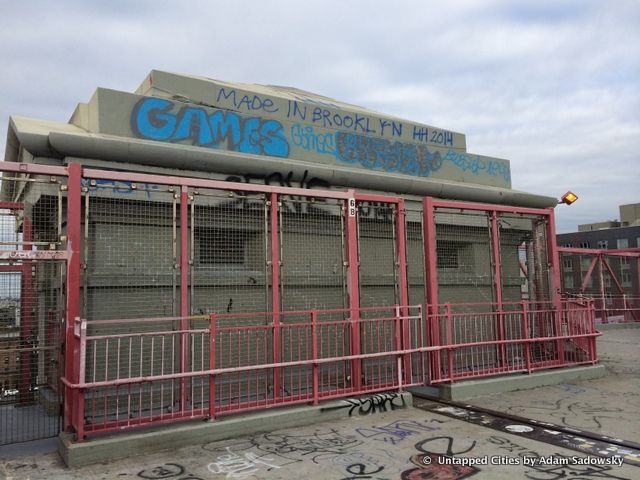


Image via Library of Congress (c. 1900-1906)
Even before the Brooklyn Bridge was finished in 1883, city planners recognized that additional East River crossings would be needed to meet the growing transportation needs of New York City. Construction began on the Williamsburg Bridge on October 28th, 1896, with Leffert Buck as the chief engineer and Henry Hombostel as the architect. Here are ten interesting facts about the creation of the bridge that you may not be aware of:
1. Many people thought the bridge was unattractive
Unlike the Brooklyn Bridge, whose neo-gothic towers are made of stone, the suspension cables of the Williamsburg Bridge are supported by steel towers. The industrial look of the steel truss towers was not considered aesthetically pleasing. Gustav Lindenthal, the Commissioner of Bridges, considered the steel towers to be “the ugliest possible.” Scientific American wrote “The eye may range from anchorage to anchorage, and from pier to finial of the tower without finding a single detail that suggests controlling motive, either in its design or fashioning other than bald utility.”
2. The towers may have been inspired by the Eiffel Tower
Prior to his work on the Williamsburg bridge, Leffert Buck worked with Alexandre Gustav Eiffel, the designer of the Eiffel Tower, on previous projects. This may account for the alikeness between the elevation view of Eiffel Tower and the Williamsburg Bridge towers. The Eiffel Tower itself is full of secrets too, check them out here.
3. The side spans of the bridge are not supported by the suspension cables
One of the features of the Williamsburg Bridge that is very unique is that the side spans, which are the sections of the bridge between each tower and the anchorage, are not supported by the suspension cables, but instead are supported by viaducts. This accounts for the lack of any vertical cables going from the suspension wires to the side spans.
4. The towers would have been over 30% taller

The 333 foot towers were originally planned to each have an additional 140 foot tall decorative spire, which ended up not being constructed.
5. There used to be trolley tracks on the bridge
Up until 1948, passengers were able to cross the bridge in streetcars. The streetcars travelled into an underground terminal in Manhattan underneath the intersection of Delancey Street and Essex Street. The underground terminal is currently abandoned; however, this terminal may be converted into a public space that will be called The Lowline.
6. A fire during construction damaged some of the wires
It should be no surprise that the Roebling Company, being the leading manufacturer of wire cables, was selected to supply the cables for the Williamsburg Bridge. On November 10th, 1902, a fire broke out from a worker shack on top of the Manhattan tower and damaged some of the wires. The Roebling Company removed the damaged cables and spliced new cables in their place.
7. There are four public restrooms on the pedestrian and bike lanes

No longer in use, these four restrooms were designed by Rafael Guastavino, the same architect who designed the Tile Arch System inside Grand Central Terminal.
8. Multiple East River ferry services went out of business after the bridge was constructed

Photo from New York Public Library
There were five ferry routes running between Williamsburg and the Lower East Side prior to the construction of the bridge. All of them would be out of business within a few years of the bridge opening, including the Grand Street Ferry which connected Grand Street in Williamsburg to Grand Street in Manhattan.
9. The Williamsburg Bridge was constructed in half the amount of time it took to build the Brooklyn Bridge
The Brooklyn Bridge construction began in 1870 and took 13 years to finish; the Williamsburg Bridge would be built in half that amount of time due to the quicker construction of the steel towers and improved building methods.
10. When construction began on the bridge, New York and Brooklyn were two separate cities
Consolidation of the five boroughs occurred on January 1st, 1898. What began as a project to link two cities ended as a bridge between two boroughs.
See more photos of NYC’s famous bridges under construction and check out the Top 10 Secrets of Grand Central Terminal.

